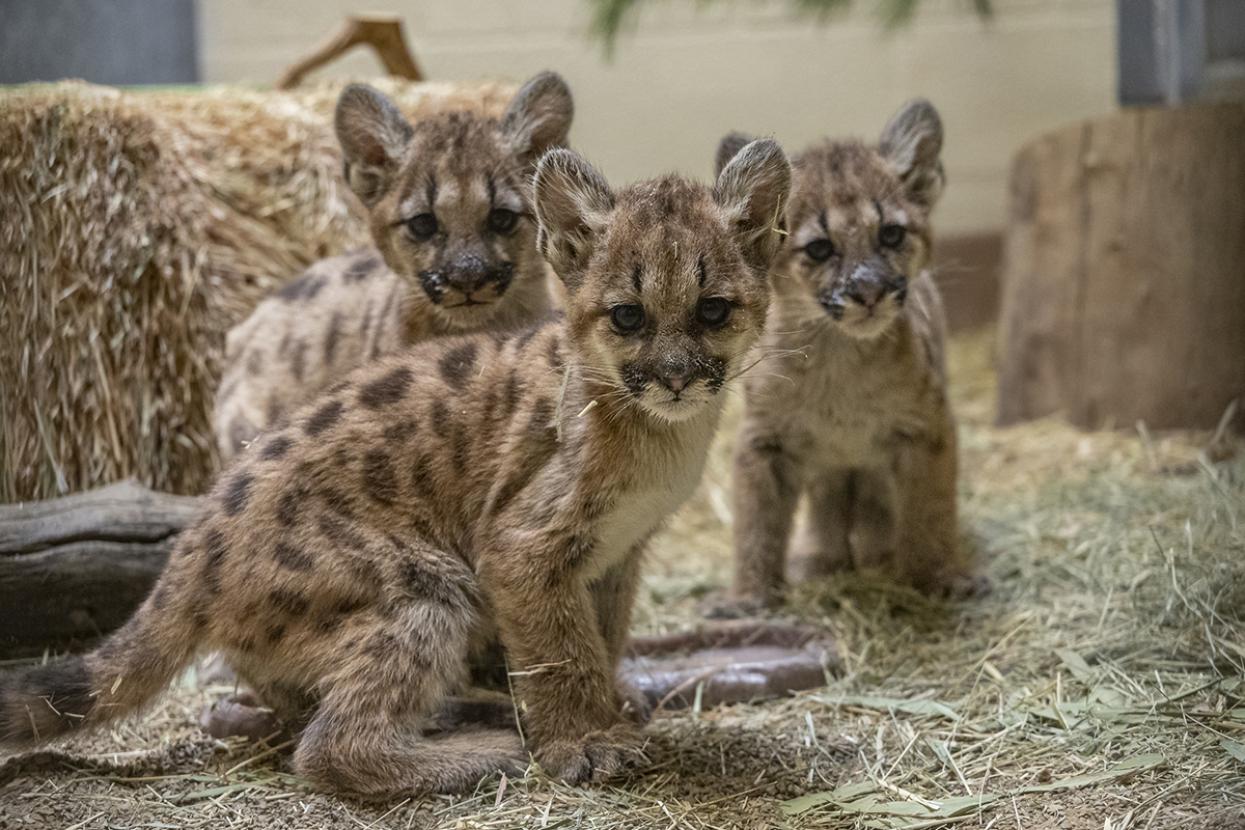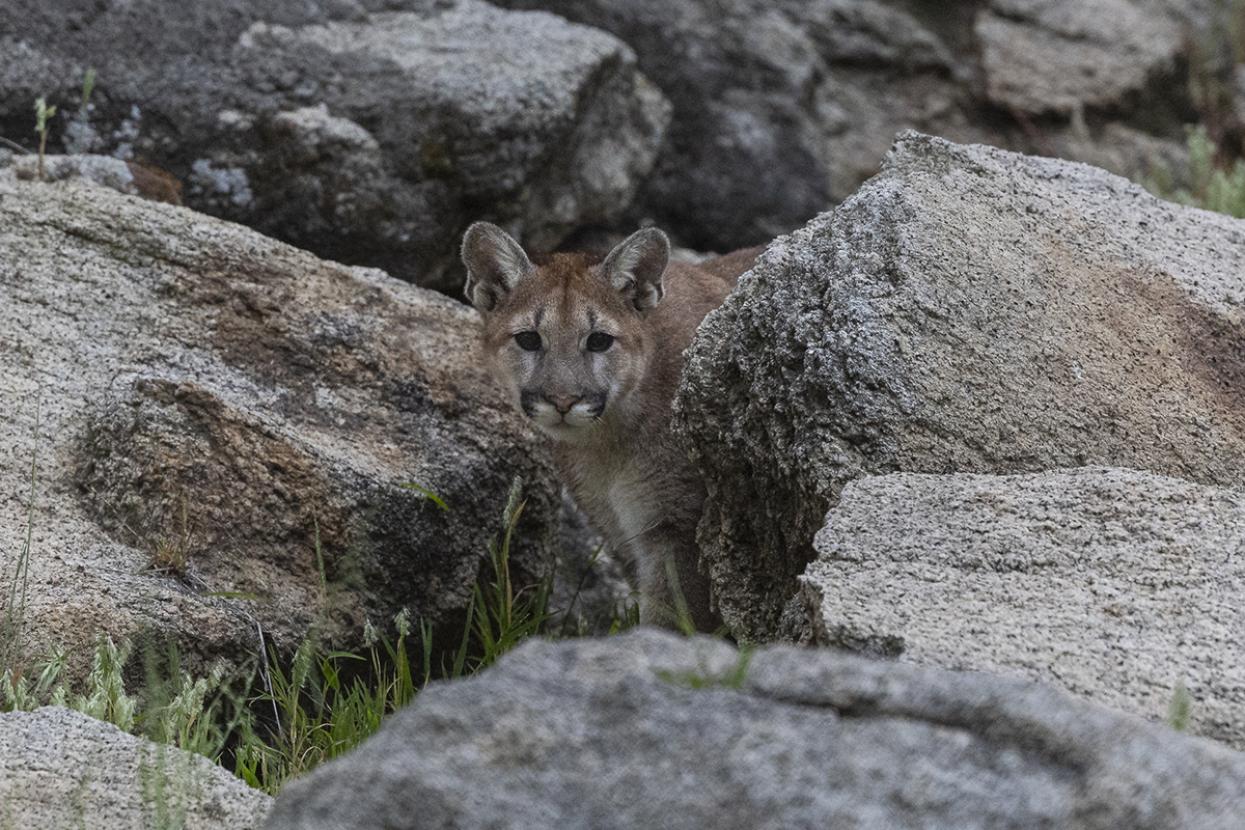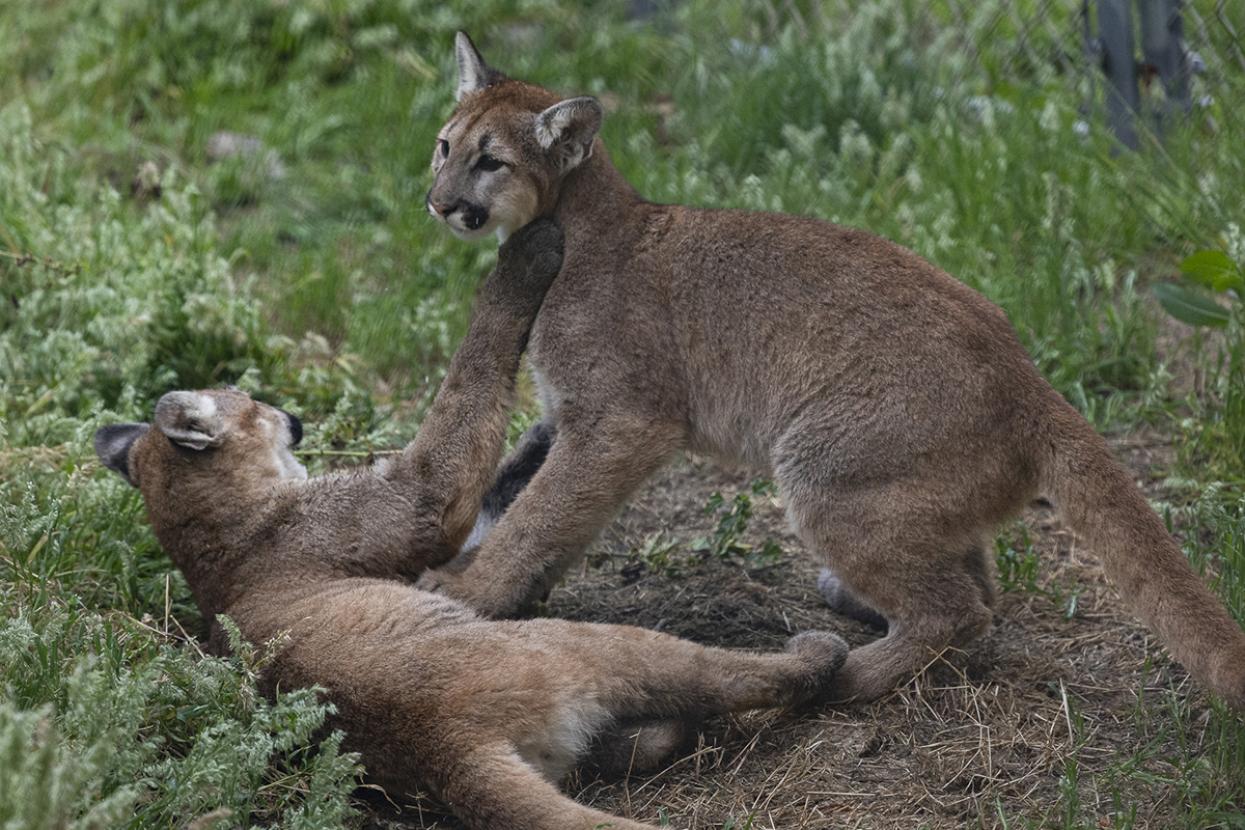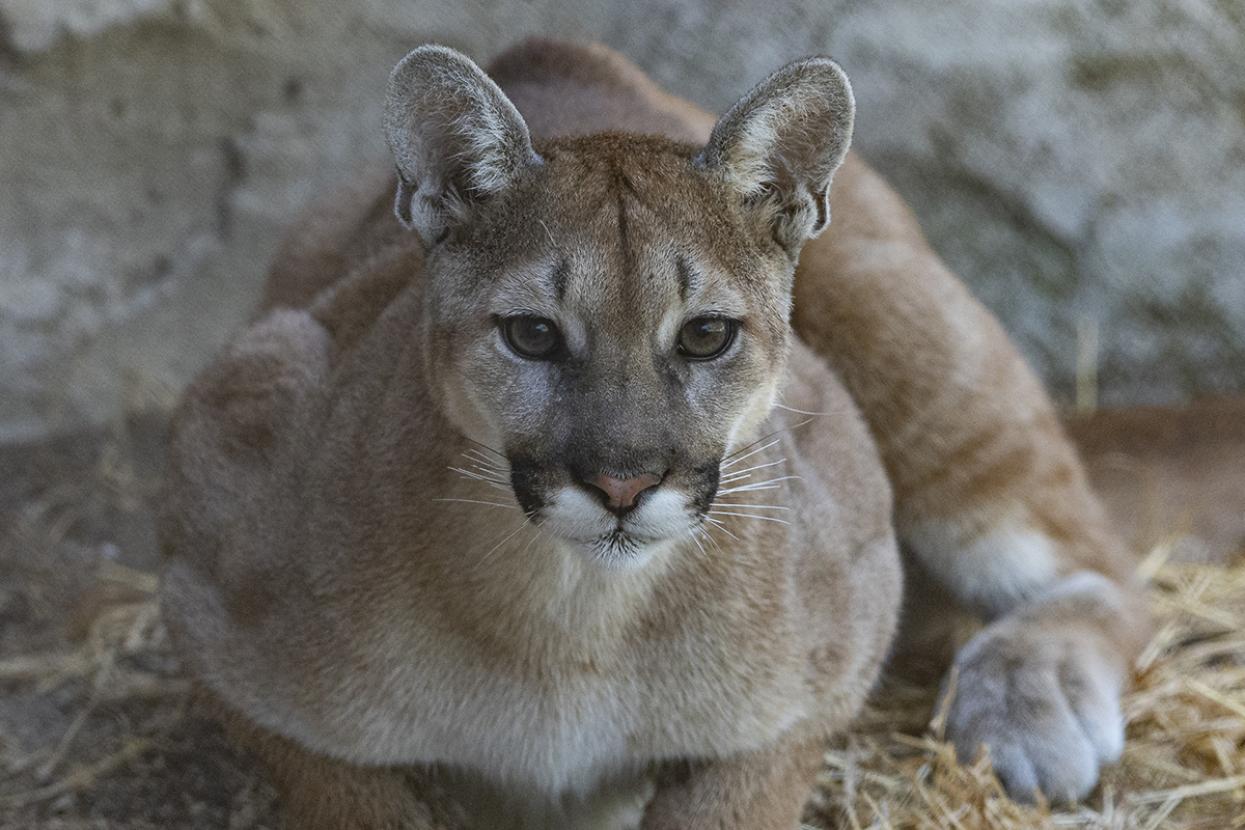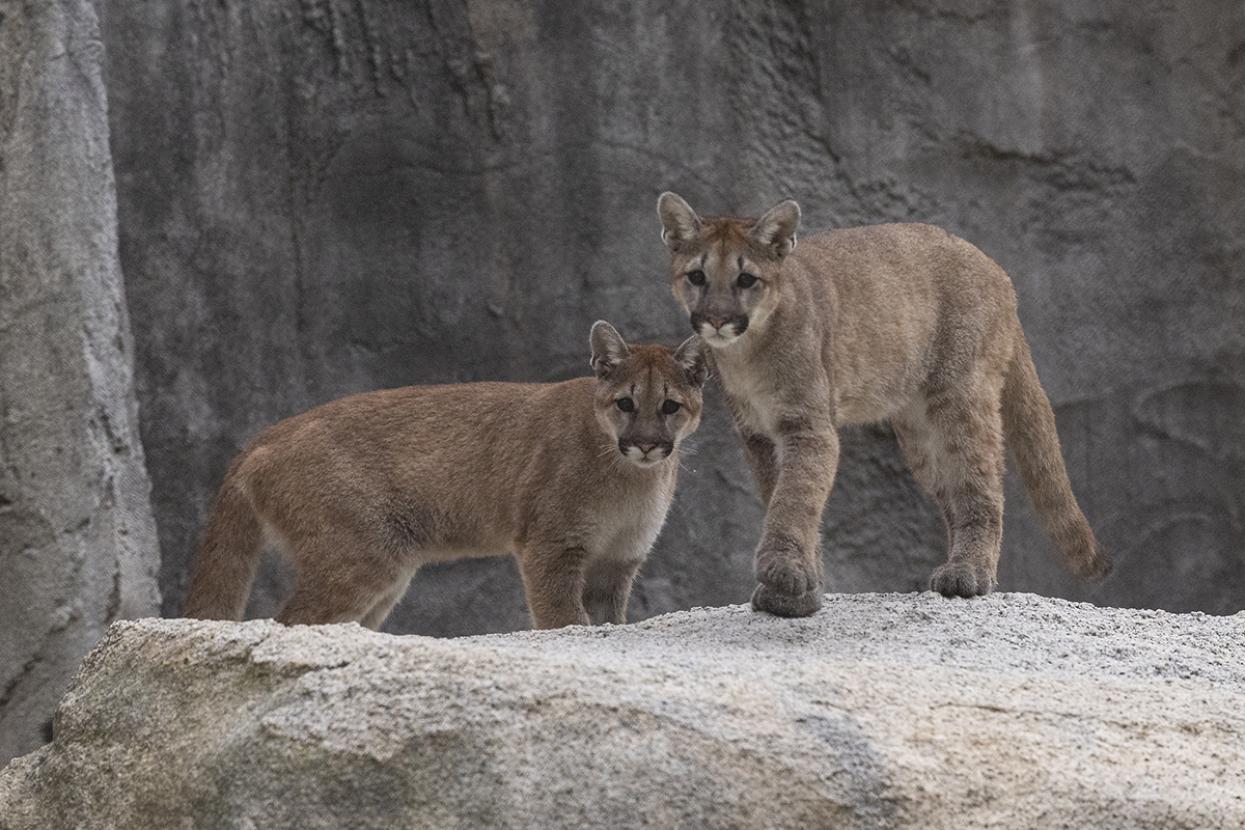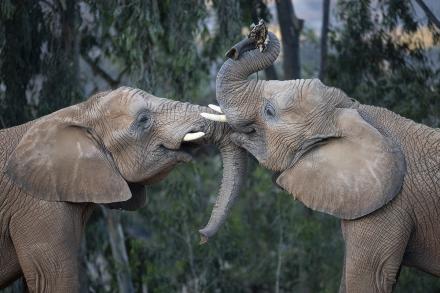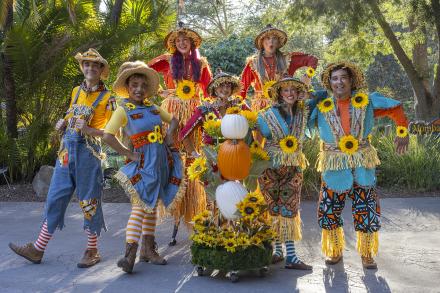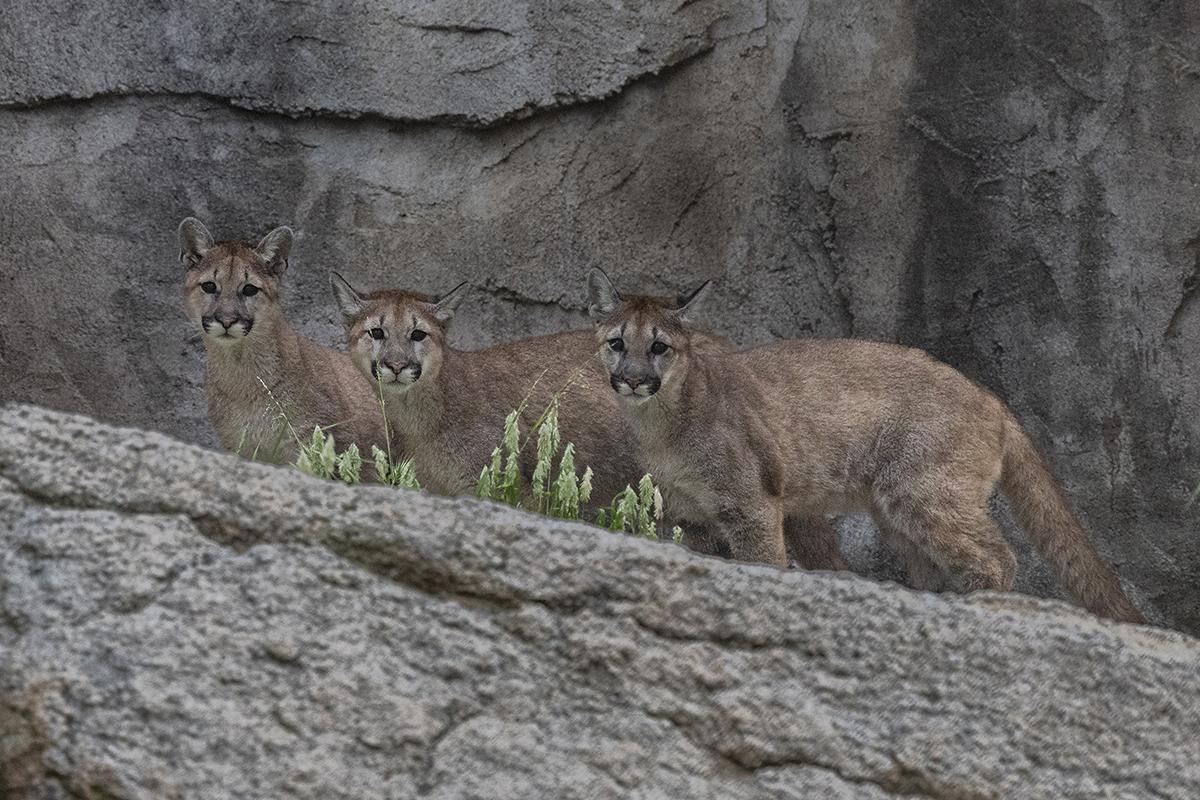
From left to right: Pehkaay, Te'Oyee, Hemuk
Nearly two years ago, a trio of orphaned mountain lion cubs made headlines when they were heroically rescued. Their mother had passed away and the little ones likely wouldn’t have survived more than a week on their own due to their young, vulnerable age.
Once our expert teams and close partners got word of the situation, they quickly jumped into action to find the cubs and bring them to safety. To do so, they had to scour the rocky, mountainous, vegetation-covered landscape of the San Pasqual Valley in Escondido, California. Locating three tiny little cubs that weighed no more than a few pounds each was truly a three-needles-in-a-haystack rescue mission.
The mountain lion trio shortly after they were rescued.
Miracle Mission
The cubs’ mom, named F307, was well-known to our wildlife care and conservation teams. She was being monitored as part of a collaborative conservation effort to foster human-wildlife coexistence and help protect her species. When it became clear she’d lost her life, our experts and partners used tracking technology to locate and rescue her cubs before it was too late. These teams were determined and committed. It took them about a week of dedicated searching through tough terrain, but miraculously, all three cubs were found and brought to safety in time.
Mountain lions seamlessly blend into their surroundings, which was part of the challenge in locating the three cubs.
To honor their mother’s legacy and their connection to the land, the cubs were named in the native local Kumeyaay language, given in the order they were found: Hemuk (meaning 3), Te'Oyee (meaning 0), and Pehkaay (meaning 7).
Their journey since has been as remarkable as their rescue. All three were dehydrated and were brought the San Diego Zoo Safari Park to recover. Because they weren’t old enough to have learned any survival skills from mom, it was determined by the California Department of Fish and Wildlife Service that they couldn’t be reintroduced into their native habitats. They were given a forever home with expert care at the Safari Park. And over the last two years, Hemuk, Te'Oyee, and Pehkaay have grown from vulnerable cubs to thriving near-adults.
Growl-ing Up
Mountain lions are naturally nocturnal, so our overnight wildlife care team works with the cubs from dusk until dawn. This team has been there every step of the way to witness their development. As wildlife care supervisor Ollie Zirbel says, “It’s been an honor getting to watch them grow and learn from each other. From six-week-old cubs whose lives drastically changed overnight, to resilient and beautiful two-year-old ambassadors for their species.”
The cubs' personalities have remained remarkably consistent since their rescue, although their distinguishing physical features have changed. Until mountain lions are about four to six months old, their coats are spotted. This helps them blend into the grass, brush, and dappled sunlight of their native habitat. As the trio aged and their unique marks faded, our team discovered other ways to tell them apart.
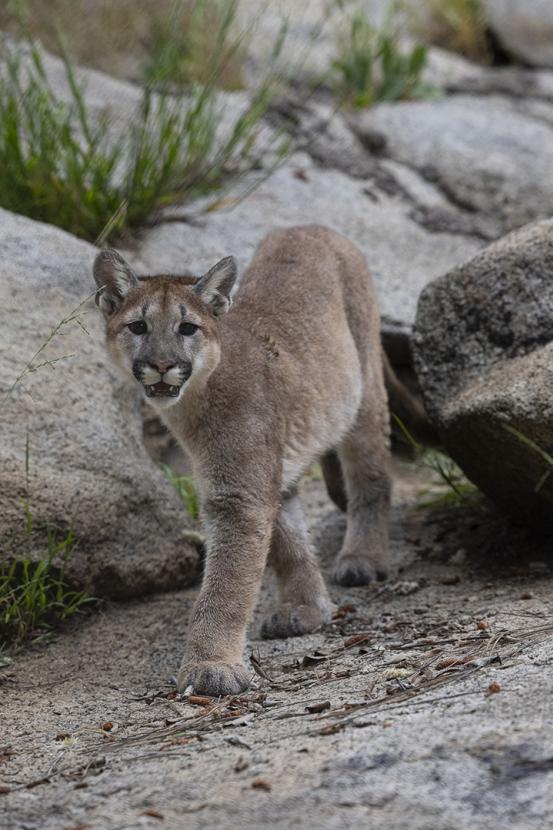
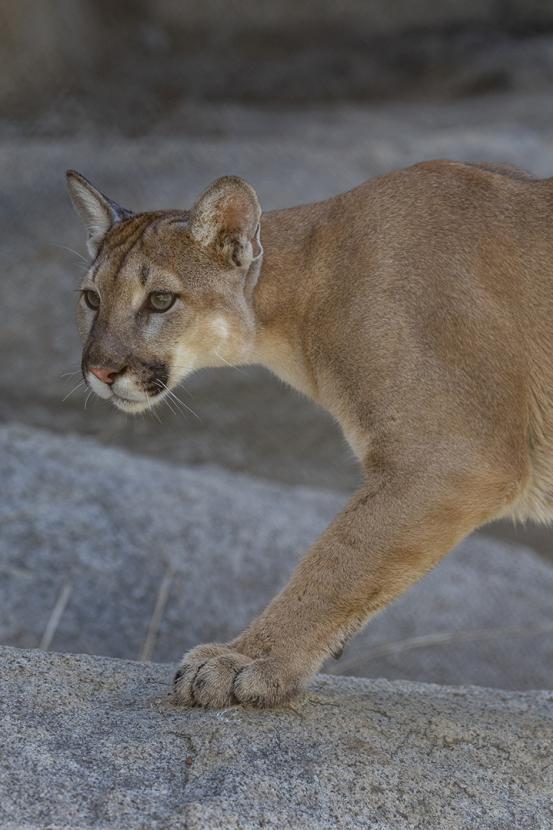
Te'Oyee's personality hasn't changed much as he's grown. He's always eager to investigate new things.
Hemuk, the first male found, has a quiet confidence. Te'Oyee is a powerful presence and is always eager to explore or to investigate new things. The males have some visible differences in their facial markings, as Hemuk has more prominent markings above and below his eyes while Te'Oyee sports two small dots on the bridge of his nose—and if you’re still not quite sure based on their appearances alone, the one purring will be him!
Pehkaay is 20-30 pounds lighter than her brothers, and she stands out with a darker red coat and distinctive dots on her nose. Zirbel describes her as intentional and the most cautious of the trio. These behaviors are natural for mountain lions: males establish new territory when they leave their family, and females tend to keep a more watchful eye on their surroundings.
The cubs have a strong bond and regularly play together.
It’s All in the Family
The three rambunctious cubs thrive in each other’s company. Without needing to compete for resources like they would in native habitats, the cubs have formed a strong social dynamic. They regularly engage in play stalking, chasing, climbing, mutual grooming, and what their wildlife care team calls “cuddle puddles”, when they’re all curled up together.
Mountain lions are ambush hunters, meaning they take advantage of the element of surprise by launching themselves unexpectedly at their prey, gaining the upper hand and increasing the likelihood of a successful hunt. One of Hemuk, Te'Oyee, and Pehkaay’s favorite activities is fishing for their dinner as a group. They problem-solve both individually and with each other, strengthening their relationships while working towards the shared goal of a delicious, satisfying meal.
Pehkaay is smaller than her brothers and acts with intention.
Pounce on Tomorrow
The trio’s story is a stark reminder of the threats these iconic cats face in native habitats. They’re a keystone species with the largest range of any land animal in the Americas. Mountain lions are incredibly adaptable, thriving in high mountains, deserts, and coastal areas. However, in Southern California, habitat loss and fragmentation, in addition to increasing challenges to human-wildlife coexistence, are putting their populations at risk.
Mountain lions have the largest range of any land animal in the Americas. Above, Pehkaay (left) and Hemuk (right) prowl atop a rock.
We’re working to save, protect, and care for the mountain lions we live alongside through our Southwest Conservation Hub. Together with our partners, we’re using trail cameras and GPS technology to track mountain lion movement and better understand how they use their habitat. We also work to assess effective ways to support healthy coexistence. For instance, testing small, well-placed devices that make noise or light that’s neutral to domestic animals and people, but deters mountain lions. The goal is to find ways to ensure all who share these landscapes can stay safe and thrive.
The cubs’ second birthday is a celebration of their resilience and a beacon of hope for what lies ahead for their future. Like so many other rescued animals and plants, Hemuk, Te'Oyee, and Pehkaay’s journey is only just beginning. We’re honored to be a part of it as they continue to grow into adult mountain lions.
Discover how your support is making a difference for mountain lions and more wildlife through our Southwest Conservation Hub. Plus, when you reserve certain seasonal special experiences at the Safari Park, you might be able to connect with these three yourself.

